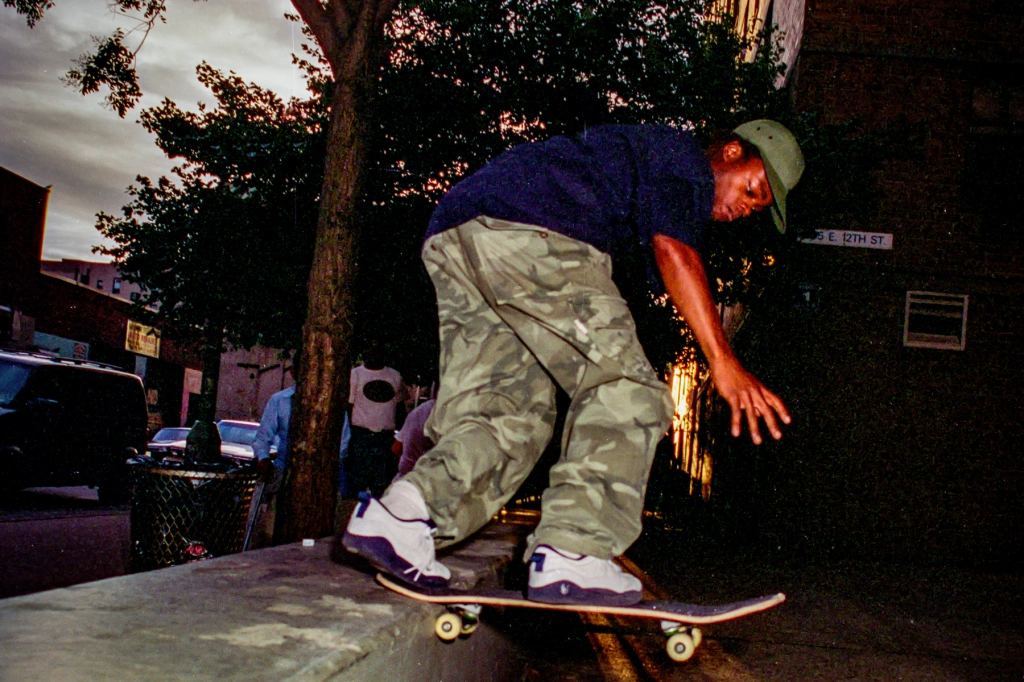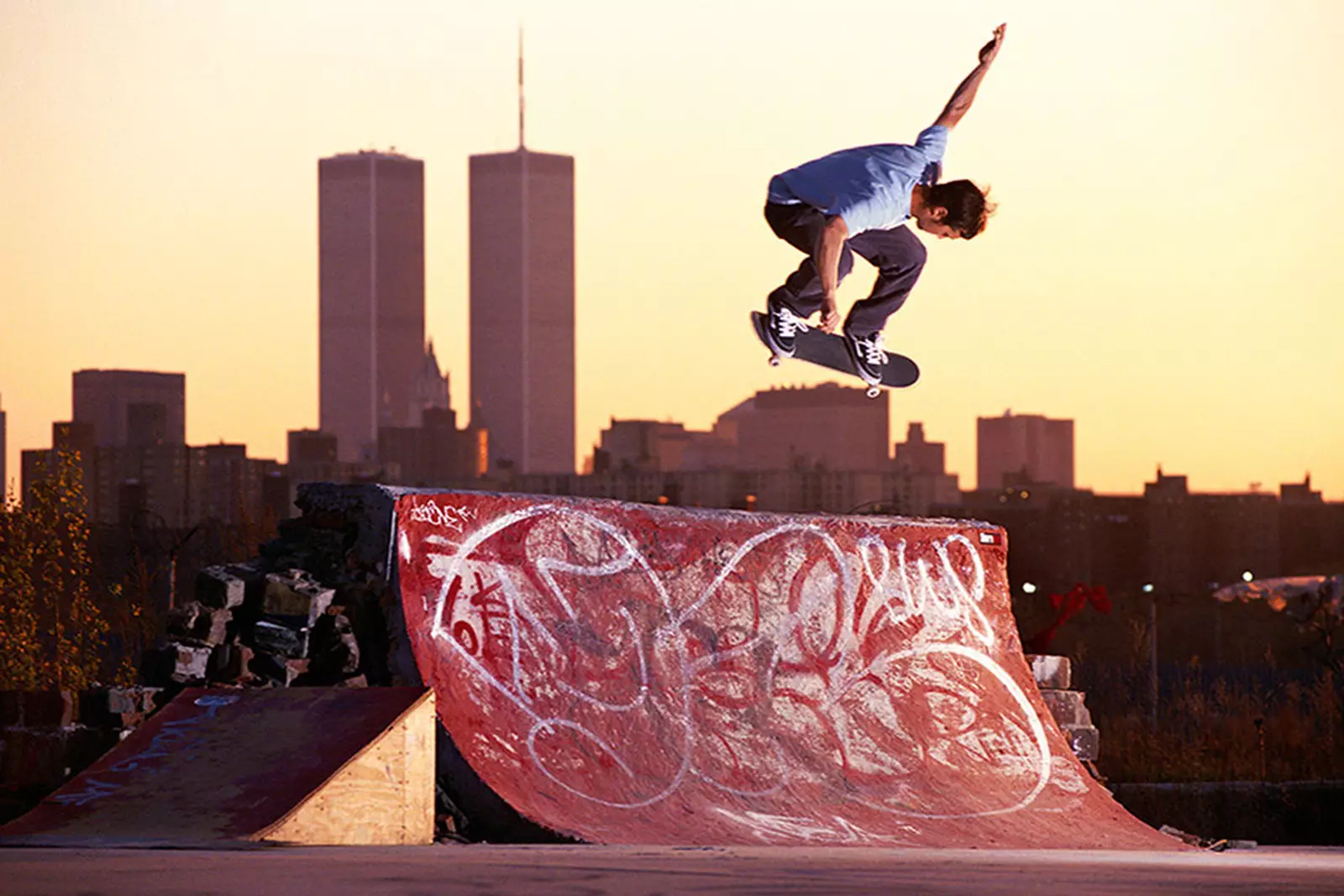Welcome to Zoo York: How 1990s NYC Skate Culture Impacted Streetwear Fashion
- Isaac De La Cruz
- Nov 7, 2022
- 4 min read
The origins of skateboarding can be traced back to surfers in the 1960s in California and Hawaii—it was an alternative option for fun when the waves weren't nice enough to surf. From its inception, most skate culture has existed on the west coast. The stereotypical skater in most people's minds were California kids i.e., Tony Hawk, the Z-Boys. Brands like Vans and Stüssy became de facto uniforms for the sport and further emphasized the west coast skater-surfer image. However entering the 90s, New York's skate scene was coming into its own identity. Unlike the laid-back, mellow nature of west coast skateboarding, NYC skate culture was gritty and aggressive, like the streets of its city. One that was immortalized in the streets by legends like Harold Hunter, Andy Kessler, and John Carter to name a few. This movement led to a revitalization of the sport and a major component of its mainstream popularity.

In the '90s, New York City's Lower East Side was not the kind of place you wanted to be lost in. However, it became a hotspot for nightlife as well as skateboarding. Hip-Hop was making its way out of the Bronx and BK and starting to make its presence known in these LES clubs. The rebellious, punk spirit present in the angsty skaters that flooded the Lower were attracted to this, and the two worlds collided and rapidly spread throughout the underground culture of NYC, creating something never seen before. Taking aspects of traditional skate style and mixing it with hip-hop and graffiti culture was something very unique to New York City. With these two worlds colliding, in both music and culture, it was only natural that fashion would be close to follow. From baggy polos and jeans to graphic tees and cargos, NYC street culture birthed its very own style. This style would be the blueprint for what streetwear would become throughout the '90s and into the 2000s.
One of the first major players in this fashion movement is without a doubt Zoo York. The brand was founded in 1993 by skaters Rodney Smith, Adam Schatz, and Eli Morgan Gesner. The name of the brand was a homage to a group of '70s NYC graffiti artists and skaters called "The Soul Artists of Zoo York". Throughout the '90s the brand was authentic to the city's culture. New York gets cold and rainy, and from the hoodies to the jackets, its rugged and versatile style was more friendly for East Coast skaters than the popular brands that dominated Cali at the time. Gesner was also a co-founder of Phat Farm alongside rap mogul, Russel Simmons. With that connection it's easy to see how the style of NYC hip-hop scene that defined fashion in the late '80s and early '90s was influential in the development of Zoo York's signature style. Additionally, Zoo York skate tapes had the likes of Harold Hunter and Danny Supa ripping it up while Enter the Wu-Tang (36 Chambers) played in the background. The culture had officially come together to create something entirely new.
In the documentary, All The Streets Are Silent: The Convergence of Hip Hop and Skateboarding (1987-1997), one of Zoo York's founders, Eli Morgan Gesner, recalls meeting a young James Jebbia on the streets of New York. The two spoke about how Jebbia wanted to open a skate shop due to the lack of many in the city; Jebbia's idea of a skate shop would be completely different.
In 1994, James Jebbia opened the first Supreme store in Soho, NY. Skaters like Ryan Hickey, Gio Estevez, Chris Keeffe, Peter Bici, and Mike Hernandez, were all a part of the original skate team. The store was authentic to the city and bold in its design, and over time became the bridge between this new skate culture that was emerging and the city as a whole. The brand had the same aspects that made Zoo York popular in the community yet took it down a more global route. Their clothes and decks often had artwork and photography referencing celebrities and pop culture that Supreme has been so synonymous with today. This connected the still underground scene of skateboarding to everyone else.
In 1994, fashion powerhouse, Calvin Klein, sued the brand as many of their ads featuring Kate Moss were being covered with supreme stickers in Soho (Supreme later collaborated with Moss to release one of their most highly touted and iconic collabs to date). Calvin Klein lost the lawsuit, and this helped bolster the brand's counter-culture image.
In the 1995 cult classic film, Kids, Directed by Larry Clark and written by Harmony Korine, many of the original skaters for these respective brands were in the movie, wearing some of the original pieces made. The film gave this underground subculture of skating a spotlight, and although the film is a cautionary tale about youth, it would still influence fashion amongst skaters worldwide and fully introduce NYC skate culture to mainstream audiences.

Over the last 28 years through major collaborations, with the likes of Nike, Louis Vuitton, Stone Island, and Comme des Garçons, Supreme has gone from an underground brand that supported an emerging movement to one of the most hyped and recognizable streetwear brands in the world worth over $1 billion dollars. Still today, Supreme does not forget its routes in New York, frequently collaborating with brands like The North Face, a brand whose presence has been tied to New York City street fashion for decades. I mean if you don't have a North Face Puffer are you even from New York?
Since its inception in 1993, Zoo York has shifted its presence and identity in streetwear. In 2001, Zoo York was sold to Marc Ecko of Ecko Unlimited, but recently in 2019, the original partners of Zoo York rejoined the company as creative directors and aid Zoo York into the new age of streetwear and skate culture.

Over the last 30+ years, the reputations of companies and the city in which they were birthed have changed. The authentic reputation is no longer there, and everything seems commodified. However, it is comforting to know the legacy and influence left by the NYC 1990s skate brands and the movement they helped promote is still present, and streetwear fashion has never been the same since.



















The influence of 1990s NYC skate culture on streetwear is undeniable! Brands like Zoo York and Supreme helped shape an era where raw authenticity met urban fashion. Just like a Men’s Pelle Pelle Leather Jacket or a Pelle Pelle Vintage Jacket, these styles represent more than just clothing—they symbolize a movement, a lifestyle, and a legacy that still resonates in today’s street fashion.